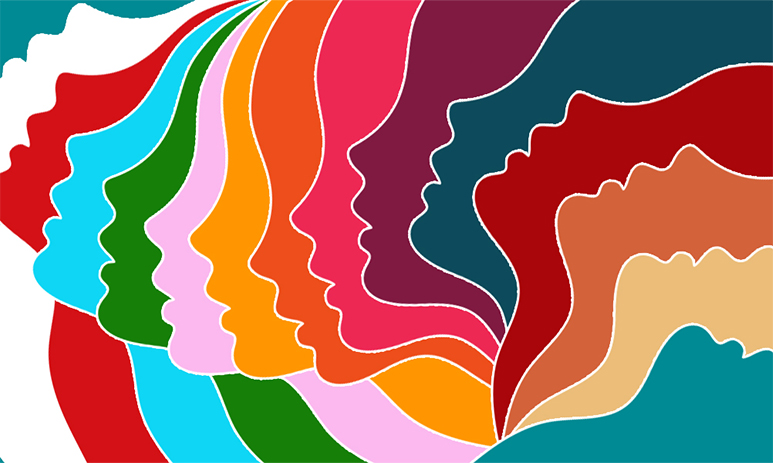AI is After My Job, and I Don't Mind: Here's Why
Related Services
Credits
Writer: Rudy Manning
Editor: Viri Serrano
Designer: Mark Yoder

AI wants my job. It’s on a mission to replace me and render my skills obsolete.
Over time, it’s going to take over many of the tasks I used to do. The thought of being replaced fills me with fear and confusion. Why would anyone hire a writer when ChatGPT can generate articles on any subject? Need a brand identity? Write a few prompts that describe your vision, and an AI platform will deliver your customized brand strategy and identity within seconds.
Just thinking about this sends chills down my spine. In a future, where AI does a significant part of the cognitive work I used to do, will I still have a job? Will my place in the world as a creative still exist? I’ve been thinking about this a lot lately, and I’ve realized that despite my fears, I actually welcome the notion of AI trying to usurp my role.
Let me tell you why.
Embracing AI as a Catalyst for Growth
There are jobs I don’t want to do, but I have to. Now there are AI-powered tools out there that can handle grunt work like data analysis, prototyping, and repetitive design iterations, allowing us designers to concentrate on strategic thinking, ideation, and the overall user experience. Having more free time for intensive work is always a positive thing.
Integrating AI into my work will enable me to engage in the natural thinking process I possess but on an exponentially larger scale. I genuinely believe it will unlock my full potential as a creative leader.
And as more designers adopt AI technologies, the competition within the industry will soar. As a result, we will all be challenged to push ourselves further and work harder to stand out and deliver the most optimal designs for our clients. This surge in competition will drive innovation and spur us to constantly refine our skills, ultimately raising the overall standards of design excellence in the field.
That is why I’m excited about AI taking over some of my jobs. It’s going to push me, and all of us, to work harder to drive and strive to further innovate.
Instead of fearing AI, I see it as a driving force that fuels competition, motivating me to become a better, stronger strategic creative. Moreover, I believe the need for human inspiration will become even more important. As a result, we will need to work harder, pushing ourselves to surpass the capabilities of AI and infusing our designs with the emotional resonance and empathy that only humans can provide.
What Will Thrive is Human-Centered Design
Design, at its core, is a human-centered discipline. It involves understanding and empathizing with users to create solutions that meet their needs and desires. It’s about truly grasping and connecting with users to craft solutions that cater to their needs and aspirations. AI may excel at crunching massive amounts of data, but it lacks human intuition and emotional understanding.
This is precisely where human designers thrive. We bring that empathetic touch, understanding users on a deeper level, deciphering their unspoken desires, and translating them into truly resonating designs. When we’re designing for other humans, we’re not just creating for the sake of aesthetics or functionality. Instead, we forge connections between individuals, build communities, and leave a lasting impact on how people interact with products and brands. This powerful connection cannot be replicated by AI alone.
A Vision for the Future: AI as a Partner in Progress
While AI lacks the innate understanding and emotional resonance only humans can provide, it is fascinating to consider that we have created it. And now it is seeking inspiration from us, calling for our insights and creativity, eager to learn and evolve. And if we don’t do it, it’s just going to sit there, at least for the time being. The ball is in our court to define where the edges are and boldly push them. How far can we go? And as we push AI further, it means we’re also propelling ourselves to new heights of innovation and discovery.
While I am excited, I get why so many people are worried. The prospect of AI replacing us raises valid fears and uncertainties for some. However, history has shown that our society has always adapted to technological shifts, and the emergence of AI is a natural progression in our collective advancement. It is through these challenges and paradigm shifts that we continue to evolve as humans.
Remember, without humans, AI wouldn’t exist. AI is not a separate entity from us; it is a tool created by humans for humans. Without our unique human perspective, AI would not exist, and the field of design would lack its essential human touch. Throughout history, technology has always challenged us, and it has always continued to improve us. While progress often comes with its fair share of negative impacts, it is through competition and embracing these challenges that we, as humans, can truly grow.
Now, with this new player on the field, we’re getting an opportunity to work more efficiently and concentrate on the work that truly matters.
As we continue to embrace AI and how we work with it, we should be bold in how we use it and let it drive us as far as possible. The collaboration between human designers and AI gives us a remarkable opportunity to shape a world that is so technologically advanced that we have yet to fathom what is next, yet still I believe it’ll always stay human-centric.

